Channa andrao
Lal Cheng
Etymology
Channa: from the Latin channe, used to refer to an unspecified species of sea perch.
andrao: named in honour of Andrew Rao, Malabar Tropicals, Calcutta, for “his support of the ichthyological exploration of the freshwater fish fauna of India”.
Classification
Order: Perciformes Family: Channidae
Distribution
Endemic to the Brahmaputra River basin in northeastern India, and officially known only from a swamp in the vicinity of Barobisha town, although collections for the aquarium trade appear to suggest the existence of at least one additional population (see images).
Type locality is ‘India: West Bengal: Jalpaiguri district: Lefraguri swamp, 26°31’N 89°50’E’.
Habitat
Barobisha lies in a zone of subtropical plains between the rivers Raidak and Sangosh, both tributaries of the Brahmaputra which display dramatic seasonal fluctuations in volume and flow.
The area has a humid, tropical climate with short, hot summers from mid-March to mid-June, heavy monsoon rainfall between June and September, and relatively mild winters October to March (average minimum air temperatures 38-45 °C/100.6-113°F during summer to around 15 °C/59 °F in winter), although water temperatures can be cool due to snow-melt runoff from the Himalayas.
In July 2006 the type locality comprised a shallow, silty forest swamp containing turbid water with abundant submerged vegetation. PH was 6.3, conductivity 72 μS·cm, and water temperature 26.9°C.
Little else is known about this species’ natural history, although during dry periods it is known to occupy burrows since its habitats may become temporarily desiccated between the annual monsoons (A. Rao, pers. comm.). These contain permanent water and are used as refuges during the winter months. The fish only emerge to hunt and breed while the habitat is flooded, a behaviour that has also been observed in certain other Channa species from northern India.
Like others in the genus it can also tolerate hypoxic conditions due to its ability to breath atmospheric air (see ‘Notes’).
Maximum Standard Length
100 – 110 mm.
Aquarium SizeTop ↑
An aquarium with base dimensions of 80 ∗ 30 cm or equivalent is recommended for a single pair, with larger quarters required for a group.
Water depth is less important but should be in excess of 30 cm.
Maintenance
Prefers a dimly-lit aquarium with a layer of surface vegetation such as Ceratopteris spp. plus some submerged cover and leaf litter.
It is essential to use a tightly-fitting hood since Channa spp. are notorious for their ability to escape, and a gap should be left between this and the water surface as they require access to a layer of humid air.
More importantly still this fish must not be maintained at a constant temperature but provided with natural seasonal variation in the form of defined winter and summer periods. During the colder period the fish do not require much food, and the water level can be allowed to fall without additional top-ups.
Water Conditions
Temperature: 14 – 28 °C
pH: 6.0 – 8.0
Hardness: 36 – 357 ppm
Diet
An obligate predator which probably feeds on insects and other invertebrates in nature, but in most cases adapts well to dead alternatives in captivity. Some specimens even accept dried foods although these should never form the staple diet.
Young fish can be offered chironomid larvae (bloodworm), small earthworms, chopped prawn and suchlike, while adults will accept strips of fish flesh, whole prawns, mussels, live river shrimp, larger earthworms, etc.
Small insects such as crickets or Drosophila fruit flies are also suitable to use, although it is best to fill the stomachs of these by feeding them fish flakes or some kind of vegetable matter before offering them to the fish.
Adults do not require food on a daily basis, even during periods of warm temperatures, and should not be offered fatty foods more than once a week.
This species should not be fed mammalian or avian meat such as beef heart or chicken since some of the lipids contained in these cannot be properly metabolised by the fish, and may cause excess fat deposits and even organ degeneration. Similarly there is no benefit in the use of ‘feeder’ fish such as livebearers or small goldfish which carry with them the risk of parasite or disease introduction, and at any rate tend not have a high nutritional value unless properly conditioned beforehand.
Behaviour and CompatibilityTop ↑
In general Channa are best-maintained in species-specific aquaria, although C. andrao can be kept in a well-chosen community arrangement alongside peaceful, non-territorial tankmates.
Young individuals can be maintained together but usually begin to display aggressive behaviour towards one another as they become sexually mature. This does vary somewhat between individuals, with females tending to be more belligerent than males. If a pair forms they are usually peaceful towards one another but hostile to other conspecifics.
Sexual Dimorphism
Females grow larger, tend to be heavier in build, and possess a greater proportion of red pigmentation on the body than males.
Adult males possess slightly more extended dorsal and anal fins and more extensive iridescent blue colouration on the unpaired fins.
When viewed from above adult males tend to have a broader head shape than females.
Reproduction
A paternal mouthbrooder which has been bred on a regular basis in captivity.
Unless a proven pair is available to buy it is best to start with a group of 6-8 young fish and allow them to select their own partners. Once a pair has formed the other fish should ideally be removed, after which spawning can be induced by providing a prolonged period of constant high temperatures while omitting water changes and other maintenance.
At the climax of courtship the pair embrace in a similar way to anabantoids, and the male collects the fertilised eggs in his mouth. Incubation is normally 3-5 days but can be significantly longer, especially in younger, less experienced individuals.
The fry are easy to raise with females producing produce infertile eggs in order to feed them once they become free-swimming, and brood care typically extends for several weeks.
NotesTop ↑
This species was available in the aquarium hobby for a number of years prior to description and continues to be traded under various names including C. sp. ‘Lal Cheng’, C. sp. ‘Assam’, C. sp. ‘blue bleheri’, C. sp. ‘himalayanus’, and C. sp. ‘red’.
The names of valid, but distinct, congeners such as C. amphibeus, C. bleheri or C. stewartii have also been misapplied to it.
It makes a particularly good aquarium fish since it remains at a manageable size but displays a similar suite of behaviour and attractive colouration as some larger members of the genus.
C. andrao is one of several Channa species to lack pelvic fins, and this character distinguishes it from all other members of the genus except C. asiatica, C. bleheri, C. burmanica, C. hoaluensis, C. ninhbinhensis, and C. orientalis.
Among these it is most-often confused with C. bleheri but can easily be told apart by absence (vs. presence in C. bleheri) of orange spots and blotches in the caudal-fin in life, possession of only two (vs. five) dark concentric bands in the pectoral fin, a longer dorsal-fin base (64.6–68.8 vs. 59.7–63.7 % SL), and a reproductive strategy based around mouthbrooding (vs. guarding of floating eggs).
C. andrao is distinguished from C. asiatica, C. hoaluensis, C. ninhbinhensis and C. burmanica by possessing fewer vertebrae (41–43 vs. 45–57), and further from C. asiatica, C. hoaluensis and C. ninhbinhensis by fewer dorsal- (35–36 vs. 46–49) and anal-fin rays (23–26 vs. 28–32), and fewer scales in the lateral line (42–43 vs. 55–64).
It also differs from C. asiatica by having fewer scales above (3.5 vs 5.5) and below (5.5 vs. 11) the lateral line, fewer preanal scales (21–22 vs. 39), fewer pectoral-fin rays (14–15 vs. 16), fewer principal caudal rays (12–13 vs. 16) and by its reproductive behaviour (mouthbrooder vs. floating-egg guarder).
It can be told apart from Channa orientalis by possessing a longer dorsal- (64.6–68.8 vs. 58.0–59.6 % SL), and anal-fin base (40.8–44.5 vs. 36.4–38.8 % SL), more lateral line scales (42–43 vs. 40–41), more vertebrae (41–43 vs. 38–40), more anal-fin rays (23–26 vs. 21–22) and only two to three (vs. five) dark, basal pectoral-fin bands.
NB: following Britz (2013) and Kottelat (2013) it is doubtful whether C. hoaluensi and C. ninhbinhensis represent valid species, since no clear characters separating them from C. asiatica are provided in the English translation accompanying the original description written in Vietnamese.
Members of the family Channidae are commonly referred to as ‘snakeheads’ due to possession of large scales on the head of most species which are reminiscent of the epidermal scales (cephalic plates) on the heads of snakes.
There currently exist over 30 valid species but diversity within the group is likely to prove significantly greater.
The existence of distinct phylogenetic groups has been proposed with the putative C. gachua species assemblage of Britz (2008) containing C. orientalis, C. gachua, C. bleheri, C. burmanica, C. barca, C. aurantimaculata, and C. stewartii.
Species from northeastern India have also been divided into the C. marulius and C. gachua groups (Vishwanath and Geetakumari, 2009).
C. andrao should be included in the latter assemblage which the authors characterise by possessing the following combination of characters: presence of a U-shaped isthmus; cephalic sensory pores evenly arranged in a single row; presence of one or two large cycloid scales on each side of the lower jaw; absence of a sharp prominent spine-like hypurapophysis; absence or presence of one tooth plate in the epibranchial; absence of an elongated urostyle.
All Channa spp. possess supplementary breathing apparatus in the form of paired suprabranchial chambers located behind and above the gills, although these are not labyrinthic but lined with respiratory epithelium. These chambers allow the fish to breathe atmospheric air and survive in hypoxic conditions or even out of the water for a considerable period of time, and in aquaria they are often seen rising to the surface to take gulps of air.
References
- Britz, R., 2013 - Zootaxa 3731(2): 287-294
Channa andrao, a new species of dwarf snakehead from West Bengal, India (Teleostei: Channidae). - Brede, N. and P. Antler, 2009 - Natur und Tier Verlag, Münster: 62 pp.
Schlangenkopffische—Die Gattungen Channa und Parachanna. - Britz, R., 2008 - Ichthyological Exploration of Freshwaters 8(4) [for 2007]: 335-344
Channa ornatipinnis and C. pulchra, two new species of dwarf snakeheads from Myanmar (Teleostei: Channidae). - Goswami, M. M., B. Arunav and P. Janardan, 2006 - Journal of the Inland Fisheries Society of India 38(1): 1-8
Comparative biometry, habitat structure and distribution of endemic snakehead (Teleostei: Channidae) species of Assam, India. - Vishwanath, W. and Kh. Geetakumari, 2009 - Journal of Threatened Taxa 1(2): 97-105
Diagnosis and interrelationships of fishes of the genus Channa Scopoli (Teleostei: Channidae) of northeastern India.
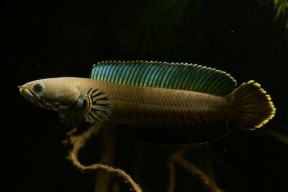
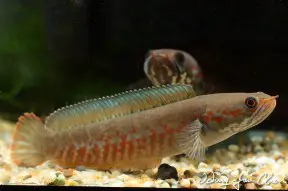
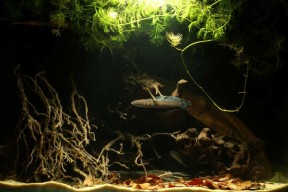
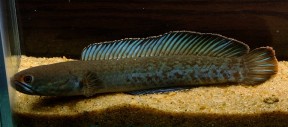
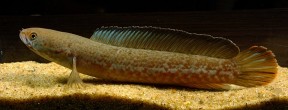
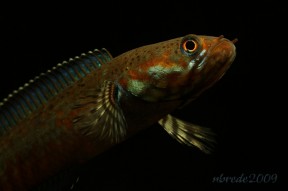

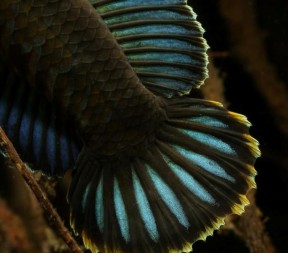
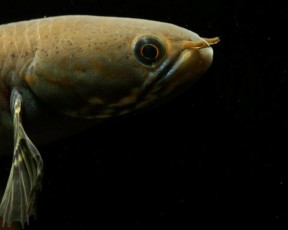
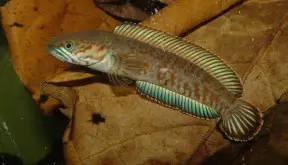
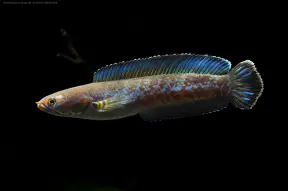
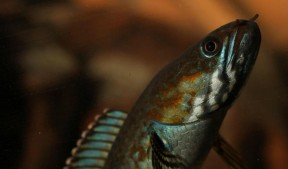


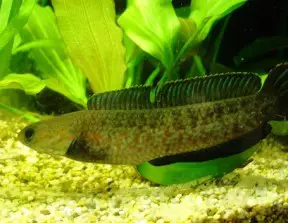
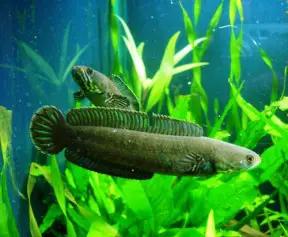
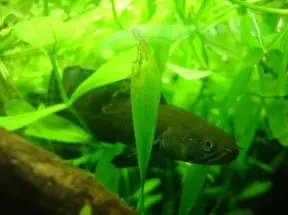

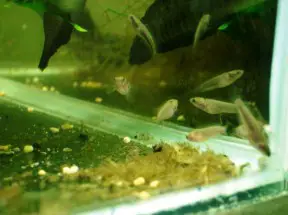
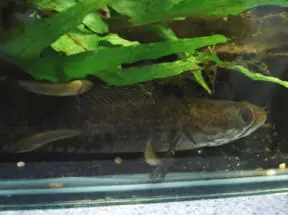
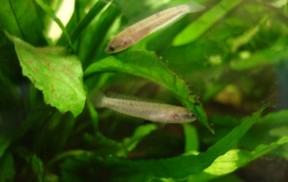
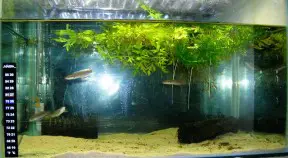



January 31st, 2014 at 4:54 pm
Hi,
Is there any more specific information available on breeding these fish? This seems to be the only information available that I have found.
Thanks.
January 31st, 2014 at 11:28 pm
Hi Eco, the pics in this profile with fry are mine and some other members here have bred it as well I think. What would you like to know?
February 1st, 2014 at 10:09 am
Hi Matt,
Thank you for your response,
I recently purchased a breeding pair and have been searching the internet for information on breeding them since, someone saying something then another saying something else. I just want to be sure i am doing all I can and am after some advice if any from someone like yourself.
The pair have been placed into my 180ltr, heavily planted tank with rock cave, bog wood. The substrate consists of dirt capped with fine gravel along with a few indian almond leaves (some rolled up).
The tank has a Juwel internal box filter and a CP2 Fluval circulation jet aimed towards the bottom of the front glass.
Tank mates: Twig catfish, a few siamese algae eaters and oto catfish. (might move them out as they will probably end up as food).
Temp currently: 23-24c
Ph: around 6.5
I’m thinking about dimming the lights somehow too?
I might be over thinking things slightly but I am after any information that is worth knowing and any advice you may have, it would be massively appreciated!
Many thanks.
February 5th, 2014 at 1:43 pm
Hi Andy,
Pics of the tank would help, but my recommendation would be to wait until spring then turn off the filters and stop performing water changes – let the water level drop as it evaporates. Sounds weird but it worked for me.
From what you say your fish have bred before?
You can see a pic of the set-up I used if you scroll to the very last one in the profile. By the time they bred the water was about half the depth shown there. Hope this helps, and please go ahead if you’ve any more questions.
Cheers,
Matt
February 17th, 2014 at 3:19 pm
Hi Matt,
Many thanks, sorry for late response, how shall i send you some photos?
Ok so keep the temp at 24c for the time being?
Thanks
February 17th, 2014 at 8:54 pm
Hi Andy, you can post them on the forum here or I can pm you my email as you prefer.
I didn’t use a heater with my fish – room temperature plus location by a sunny window seemed to do the trick.
February 18th, 2014 at 7:29 pm
Not sure how you post them on here?
Ok, so perhaps gradually turn off the heater and wait for summer for the tank to warm naturally?
Thanks,
October 31st, 2019 at 8:07 am
hi matt,
i would like to see your profile picture wheres andrao with its fry.
thanks
November 26th, 2019 at 7:11 pm
Hi, the images with fry are included here. Just click on one of the photos to make it bigger, then use the arrows to scroll through until you find them.